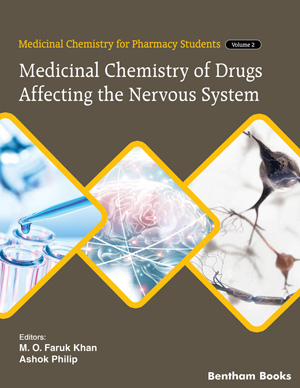Abstract
This chapter is a comprehensive account of the medicinal chemistry of general and local anesthetic drugs. It provides the mechanism of drug action and details about structure-activity relationships of these drugs for pharmacists. After the study of this chapter, students will be able to:
• Select appropriate intravenous general anesthetic therapy based on patient-specific contraindications regarding cardiac and septic status.
• Evaluate inhaled general anesthetics about therapeutic regimens based on individual patient characteristics and medical procedures.
• Compare and contrast the potency, onset of action, and recovery time of the inhaled anesthetic based on MAC, blood: gas partition coefficients and oil:gas partition coefficients.
• Identify chemical metabolites of the inhaled anesthetics that increase the risk of nephron and hepatotoxicity.
• Identify the chemical classification to which a local anesthetic belongs based on drug structure.
• Select an appropriate local anesthetic for a patient with a specific allergy to PABA.
• Communicate the chemical rationale for local anesthetic buffering to health professionals.
Keywords: Drug-Receptor Interaction, General Anesthetics, Injectable Anesthetics, Inhaled Anesthetics, Local Anesthetics, Structure-Activity Relationship, The Clinical Use of Anesthetic Drugs.






















